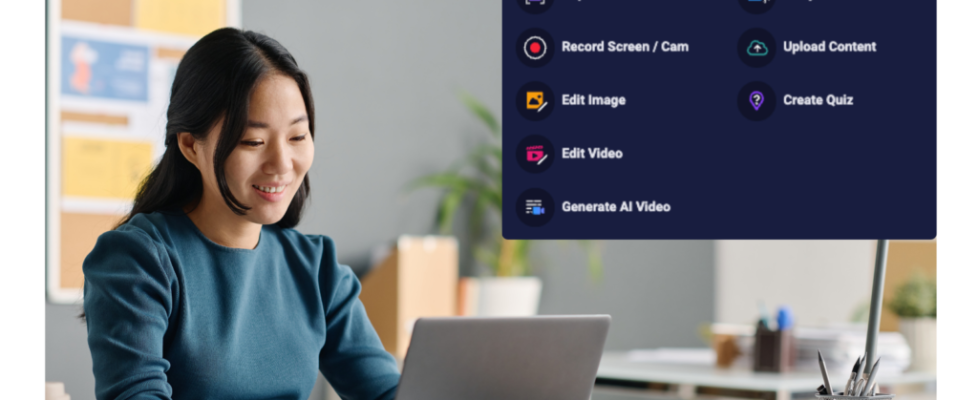Today’s seniors, high school and college, started their freshman year remotely in the first full school year during the pandemic. It’s been a long journey for students, educators, parents, and administrators. But for many, this current academic year feels like a turning point, a return to a new normal, and an opportunity to implement new techniques and technologies with purpose instead of in crisis.
Over the years, We’ve spoken with educators and administrators about their experiences with video teaching and learning, and lessons learned from remote and blended classrooms. This year, we surveyed over 500 of them across K12 and higher education to get a deeper understanding of the challenges educators face, how they’re using video to overcome these challenges, and how video learning benefits students of all grade levels.
Key takeaways
Video remains an effective way to connect with students and colleagues.
Video for teaching and learning is now mainstream. 88% of surveyed educators consider video technology essential for teaching today, and 53% of the educators reported an increase in their video usage for classes since 2023. Only 7.5% reported using video less often this year compared to last.
Blended learning is an effective instructional strategy where educators leverage the power of video, including teacher-created content, to increase student engagement, personalize and differentiate instruction, and use in-person class time more effectively.
Chronic absenteeism is a problem in K-12.
In the United States, the number of chronically absent students in K12 schools has almost doubled since pre-pandemic levels. 74% percent of educators and staff surveyed agreed that chronic absenteeism poses a significant problem in their schools. This issue has wide-ranging implications, impacting student performance, engagement, and future success.
Recognizing the urgency, educators and administrators are striving to tackle the problem through tailored interventions and assistance. Video offers educators and staff a flexible tool for communicating with students and families, to both the importance of attendance as well as help students catch up on material missed.
Managing diverse learning styles is a challenge and an opportunity.
The top challenge for educators this year, ranked as such by half of the educators surveyed, was managing diverse learning styles. This concern is reiterated by the fact that for 40% of the educators surveyed, they stated that 1 out of 5 students requires different learning approaches than the rest of the class.
Recognizing and accommodating different learning styles as well as ensuring accessibility are critical aspects of effective education. Accessible video facilitates self-paced learning and can be integrated across all elements of differentiated instruction.

Artificial Intelligence (AI) is top of mind with educators and administrators.
The education sector is on the brink of transformation with the continuous evolution of technology, and AI stands out as a key player in this revolution. Currently, 57% of educators and administrators are using AI tools. Specifically, 33% of educators use AI for content creation, 24% for creative exercises, and 21% for curriculum development.
Yet while educators are recognizing benefits of AI, from tailoring learning experiences to simplifying administrative tasks, they also express concern over the impact of AI on student learning and creativity.
Top challenges
Challenges for educators
Just as every learner is unique, so is every classroom and educator. But unique educators share common challenges and goals. Our research showed that half of educators surveyed ranked managing diverse learning styles as one of their top challenges heading into 2024. Educators also ranked technology integration (39%), time for grading (39%), assessment and feedback (39%), differentiation in the classroom (36%), and keeping up with educational trends (35%) as top challenges.
These challenges highlight the need educators have for easy tools and strategies that will save teachers time and support personalized instruction, assessment and feedback for every learner.
Challenges for administrators and staff
Outside of the classroom, technology integration tops the list of challenges for administrators and staff. Sixty six percent (66%) of respondents identified technology integration as a primary challenge, highlighting the need for effective solutions that can be easily deployed and save districts time and budget. Additionally, fifty four percent (54%) mentioned diverse learning styles as a significant challenge, emphasizing the importance of adapting instructional practices to cater to the needs of diverse learners.
Administrators and staff also ranked providing professional development opportunities for their staff (49%), resource limitations (46%), and keeping up with educational trends (40%) as top challenges going into 2024. These findings emphasize the need for support in incorporating technology, adapting instructional practices, offering ongoing training, allocating resources effectively, and staying updated with educational advancements.
Video goals in education
A majority of educators surveyed ranked increasing student engagement (78%) and increasing student focus (54%) as their top goals for video teaching and learning.
ScreenPal in the classroom
With the advent of video for teaching and learning as a mainstream practice, respondents were also surveyed regarding their use of ScreenPal in the classroom.
- Accessibility boost: The fact that 86% of respondents noted that ScreenPal aids in creating more accessible content for students speaks volumes about its impact. By utilizing ScreenPal, educators can integrate features like captions, audio descriptions, and interactive elements that cater to various learning styles and accessibility needs. This not only benefits students with disabilities, but also enhances the overall learning experience for everyone.
- Time management support: The 71% who reported that ScreenPal assists stakeholders in managing their time effectively underscores its value in productivity. ScreenPal streamlines tasks such as content creation, lesson planning, and feedback delivery, allowing educators and administrators to allocate more time to critical activities. This translates to a more organized and efficient educational environment.
- Information digestability: The feedback from 80% of respondents indicating that ScreenPal aids students in easily digesting information highlights its role in facilitating comprehension. ScreenPal’s features like visual aids, pacing controls, and interactive quizzes break down complex concepts into manageable chunks, making learning more engaging and accessible to diverse learners.
- Flexible learning review: The high satisfaction rate of 87% among respondents regarding ScreenPal’s ability to facilitate unlimited video review underscores its significance in personalized learning journeys. Students can revisit video content as many times as necessary, reinforcing their understanding, clarifying doubts, and progressing at their own pace. This flexibility promotes deeper learning and mastery of subject matter, leading to improved academic outcomes.
These insights collectively showcase ScreenPal’s multifaceted benefits in promoting accessibility, productivity, comprehension, and personalized learning experiences within educational settings.
Read the full report here.




































